Top 10 Garden Plants for Hummingbird Attraction
Discover the best plants to attract hummingbirds to your garden. These vibrant blooms not only enhance your landscape but also provide essential nectar for these beautiful creatures. Imagine stepping into your backyard and being greeted by the delightful sight of these tiny, iridescent birds flitting from flower to flower, their wings a blur of motion. With the right selection of plants, you can create a haven that draws in these feathered friends, turning your garden into a lively sanctuary. In this article, we’ll explore the top ten plants that will not only beautify your space but also serve as a buffet for hummingbirds!
Bee Balm is a perennial favorite among hummingbirds due to its tubular flowers rich in nectar. This plant thrives in sunny locations and attracts various pollinators, making it a garden staple. The vibrant hues of red, pink, and purple can add a splash of color to your garden while providing a feast for those little winged wonders. Plus, it’s relatively easy to care for, making it a win-win for both you and the hummingbirds!
Salvia offers a wide range of colors and varieties that hummingbirds adore. Its long-lasting blooms provide a steady source of nectar throughout the growing season, ensuring your garden remains a hummingbird hotspot. Whether you choose the classic blue or the fiery red varieties, salvia not only attracts hummingbirds but also adds a touch of elegance to your landscape. It’s like having a party in your garden that never ends!
Trumpet Vine features striking trumpet-shaped flowers that are irresistible to hummingbirds. This vigorous climber can cover trellises and fences, creating a stunning visual while attracting these delightful birds. Imagine a cascade of vibrant orange and yellow blooms climbing up your garden structures, all while hummingbirds dance around them. It’s a beautiful sight that can transform any vertical space into a hummingbird haven!
Red Hot Poker plants produce tall spikes of tubular flowers that are perfect for hummingbird feeding. Their unique structure and vibrant colors make them a standout addition to any garden. These plants are not just visually stunning; they also create a dramatic focal point that can draw attention from both humans and hummingbirds alike. Think of them as the show-stoppers of your garden!
Fuchsia plants are known for their drooping, colorful flowers that hummingbirds find particularly appealing. These shade-loving plants can add a splash of color to darker corners of your garden. Their elegant, pendulous blooms create a whimsical atmosphere, almost like tiny chandeliers hanging in the air. If you have a shaded area, fuchsias are a fantastic choice to brighten it up while attracting those charming birds!
Coral Honeysuckle is a native vine that produces sweet-smelling, tubular flowers. Its natural growth habit and nectar-rich blooms make it a favorite among hummingbirds and other pollinators. This plant can easily climb fences or trellises, creating a lush, fragrant environment. Plus, the sight of hummingbirds hovering around its blossoms is a joy that every gardener should experience!
Zinnias are vibrant annuals that attract hummingbirds with their bright, flat blooms. They are easy to grow and provide a continuous source of nectar throughout the summer months. With a variety of colors to choose from, zinnias can create a cheerful and inviting atmosphere in your garden. Picture a burst of color that not only pleases the eye but also invites hummingbirds to come and enjoy a sweet treat!
Lobelia features cascading flowers in shades of blue and purple that hummingbirds love. This versatile plant can be used in containers or garden beds, adding beauty while drawing in these feathered friends. The delicate blooms create a stunning visual effect, almost like a waterfall of color that beckons hummingbirds to stop by for a sip of nectar. It’s a perfect choice for gardeners looking to add a touch of elegance and attract wildlife!
Penstemon, or beardtongue, boasts tubular flowers that are perfect for hummingbirds. With a variety of species available, these hardy perennials can thrive in various garden conditions, enhancing your landscape while attracting wildlife. Their unique shapes and colors can create a dynamic display that not only captivates hummingbirds but also adds depth to your garden design.
Q: How can I create a hummingbird-friendly garden?
A: To create a hummingbird-friendly garden, choose plants with tubular flowers that are rich in nectar, provide a variety of colors and shapes, and ensure there are plenty of sunlit areas for them to feed. Additionally, avoid using pesticides, as they can harm these delicate creatures.
Q: When is the best time to plant these flowers?
A: The best time to plant these flowers is in the spring after the last frost. This allows the plants to establish themselves before the hummingbirds arrive in the summer.
Q: Do I need to provide water for hummingbirds?
A: While hummingbirds get most of their hydration from nectar, providing a shallow water source, like a birdbath, can attract them. Just make sure the water is shallow enough for them to safely land and drink.

1. Bee Balm
Discover the best plants to attract hummingbirds to your garden. These vibrant blooms not only enhance your landscape but also provide essential nectar for these beautiful creatures.
Bee Balm is a perennial favorite among hummingbirds due to its tubular flowers rich in nectar. This plant thrives in sunny locations and attracts various pollinators, making it a garden staple. Imagine a bright, sunny day where the air is filled with the gentle hum of bees and the fluttering of hummingbirds. That's the magic of planting Bee Balm in your garden! Its vibrant red, pink, or purple flowers are not just a feast for the eyes; they are a nectar-rich buffet for these delightful birds.
Bee Balm, scientifically known as Monarda, belongs to the mint family and is known for its aromatic leaves. Not only does it attract hummingbirds, but it also invites other pollinators like butterflies and bees. This makes it a fantastic choice for gardeners looking to create a lively ecosystem right in their backyard. Plus, it's relatively easy to grow, requiring well-drained soil and plenty of sunlight. Just imagine the joy of watching hummingbirds dart from flower to flower, their tiny wings a blur as they sip nectar!
Here are some key benefits of planting Bee Balm:
- Attracts Hummingbirds: The tubular shape of the flowers is perfect for their long beaks.
- Pollinator Friendly: It also attracts bees and butterflies, enhancing biodiversity.
- Low Maintenance: Once established, it requires minimal care.
- Medicinal Properties: Historically, Bee Balm has been used for its medicinal benefits, including soothing digestive issues.
Bee Balm typically blooms from mid-summer to early fall, providing a long-lasting source of food for hummingbirds. When planting, consider clustering several plants together; this not only creates a stunning visual impact but also makes it easier for hummingbirds to find their food source. The more the merrier, right? A garden filled with Bee Balm is like a hummingbird's paradise!
In terms of care, Bee Balm prefers moist, well-drained soil and can tolerate a range of soil types. However, it does best in full sun, so choose a spot in your garden that gets at least six hours of sunlight a day. Regular deadheading of spent blooms encourages more flowers to form, extending the blooming period and keeping those hummingbirds coming back for more.
In summary, if you're looking to create a garden that attracts hummingbirds while also being a feast for the eyes, Bee Balm is a top choice. With its vibrant colors, delightful fragrance, and ability to attract various pollinators, it's a win-win for any gardener. So, why not give it a try? Your garden will thank you, and so will the hummingbirds!
Q: How do I plant Bee Balm?
A: Plant Bee Balm in a sunny location with well-drained soil. Space the plants about 18-24 inches apart to allow for their growth.
Q: When does Bee Balm bloom?
A: Bee Balm typically blooms from mid-summer to early fall, providing a long season of nectar for hummingbirds.
Q: Is Bee Balm invasive?
A: While Bee Balm can spread, it is generally not considered invasive. Regular maintenance, such as deadheading, can help control its growth.
Q: Can I grow Bee Balm in containers?
A: Yes, Bee Balm can be grown in containers. Just ensure the pot has good drainage and is large enough to accommodate the plant's root system.

2. Salvia
Salvia, commonly known as sage, is a remarkable plant that offers a plethora of benefits for both your garden and the hummingbirds that frequent it. With over 900 species, this versatile plant comes in various colors, sizes, and forms, making it a perfect addition to any garden design. Hummingbirds are particularly attracted to the vibrant, tubular flowers of salvia, which are not only visually appealing but also packed with nectar. This means that by incorporating salvia into your garden, you're essentially rolling out the red carpet for these beautiful birds!
One of the most significant advantages of salvia is its ability to thrive in diverse conditions. Whether you have a sunny spot or a slightly shaded area, there's a salvia variety that will flourish. For instance, Salvia splendens, known for its bright red flowers, loves full sun, while Salvia nemorosa prefers a bit of shade. This adaptability makes salvia an ideal choice for gardeners looking to create a hummingbird-friendly environment.
Moreover, salvia is a low-maintenance plant, which is a huge plus for busy gardeners. Once established, these plants require minimal watering and care. They are drought-tolerant, making them perfect for those hot summer days when you may not have time to tend to your garden. Imagine a garden that not only attracts hummingbirds but also looks stunning with minimal effort!
To maximize the appeal of salvia to hummingbirds, consider planting them in clusters. Hummingbirds are more likely to visit areas with a higher concentration of flowers, so grouping your salvia plants can create a vibrant, nectar-rich oasis. Additionally, pairing salvia with other hummingbird favorites, such as bee balm or zinnias, can enhance the overall aesthetic and attract even more of these delightful creatures.
In terms of colors, salvia offers a stunning palette that can complement any garden theme. From deep blues and purples to vibrant reds and pinks, these flowers can add a splash of color that not only attracts hummingbirds but also delights human visitors. Plus, the long-lasting blooms of salvia ensure that your garden will remain a buzzing hub of activity throughout the growing season.
Here's a quick comparison of some popular salvia varieties that are known for attracting hummingbirds:
| Variety | Color | Sun Requirements | Height |
|---|---|---|---|
| Salvia splendens | Red | Full Sun | 12-30 inches |
| Salvia nemorosa | Purple | Partial Shade | 12-24 inches |
| Salvia guaranitica | Blue | Full Sun | 24-36 inches |
| Salvia officinalis | Green/Purple | Full Sun | 12-24 inches |
In summary, salvia is not just a stunning addition to your garden; it’s a vital resource for hummingbirds. By planting salvia, you’re not only enhancing your landscape but also supporting the local ecosystem. So, why not give these marvelous plants a try? You’ll be rewarded with a garden that’s alive with color and buzzing with the delightful presence of hummingbirds!

3. Trumpet Vine
Discover the best plants to attract hummingbirds to your garden. These vibrant blooms not only enhance your landscape but also provide essential nectar for these beautiful creatures.
Bee Balm is a perennial favorite among hummingbirds due to its tubular flowers rich in nectar. This plant thrives in sunny locations and attracts various pollinators, making it a garden staple.
Salvia offers a wide range of colors and varieties that hummingbirds adore. Its long-lasting blooms provide a steady source of nectar throughout the growing season, ensuring your garden remains a hummingbird hotspot.
Trumpet Vine features striking trumpet-shaped flowers that are irresistible to hummingbirds. With their vibrant orange and red hues, these flowers not only catch the eye but also serve as a beacon for hungry hummingbirds searching for nectar. This vigorous climber can cover trellises and fences, creating a stunning visual while attracting these delightful birds. Imagine your garden adorned with cascading blooms that not only beautify your space but also invite nature's wonders right to your doorstep!
One of the best aspects of Trumpet Vine is its adaptability. It can thrive in a variety of soil types and conditions, making it a low-maintenance option for gardeners. However, it's essential to provide a sturdy support structure, as this plant can grow quite aggressively. In fact, its rapid growth can be likened to a child’s enthusiasm for running—boundless and full of life! Just ensure you keep it in check to prevent it from overtaking your other plants.
When growing Trumpet Vine, consider the following tips:
- Sunlight: This plant loves full sun, so pick a location that receives at least six hours of sunlight each day.
- Watering: While established plants are drought-tolerant, regular watering during dry spells will encourage more blooms.
- Pruning: To maintain its shape and promote healthy growth, prune in late winter or early spring before new growth begins.
By including Trumpet Vine in your garden, you're not just adding a plant; you're creating a vibrant ecosystem that supports local wildlife. The sight of hummingbirds flitting from flower to flower is a reward in itself, turning your garden into a lively sanctuary.
Red Hot Poker plants produce tall spikes of tubular flowers that are perfect for hummingbird feeding. Their unique structure and vibrant colors make them a standout addition to any garden.
Fuchsia plants are known for their drooping, colorful flowers that hummingbirds find particularly appealing. These shade-loving plants can add a splash of color to darker corners of your garden.
Coral Honeysuckle is a native vine that produces sweet-smelling, tubular flowers. Its natural growth habit and nectar-rich blooms make it a favorite among hummingbirds and other pollinators.
Zinnias are vibrant annuals that attract hummingbirds with their bright, flat blooms. They are easy to grow and provide a continuous source of nectar throughout the summer months.
Lobelia features cascading flowers in shades of blue and purple that hummingbirds love. This versatile plant can be used in containers or garden beds, adding beauty while drawing in these feathered friends.
Penstemon, or beardtongue, boasts tubular flowers that are perfect for hummingbirds. With a variety of species available, these hardy perennials can thrive in various garden conditions, enhancing your landscape while attracting wildlife.
Q: How can I attract more hummingbirds to my garden?
A: To attract more hummingbirds, plant a variety of nectar-rich flowers, especially those with tubular shapes. Additionally, consider adding a hummingbird feeder filled with a sugar-water solution (1 part sugar to 4 parts water) to provide an extra food source.
Q: Are there any plants I should avoid if I want to attract hummingbirds?
A: Yes, avoid using plants that are heavily treated with pesticides or those that do not produce nectar. Plants like marigolds and certain ornamental grasses may not be as appealing to hummingbirds as native flowering plants.
Q: When is the best time to plant hummingbird-attracting flowers?
A: The best time to plant these flowers is in the spring after the last frost, as this will give them time to establish before the hummingbirds return for the season.
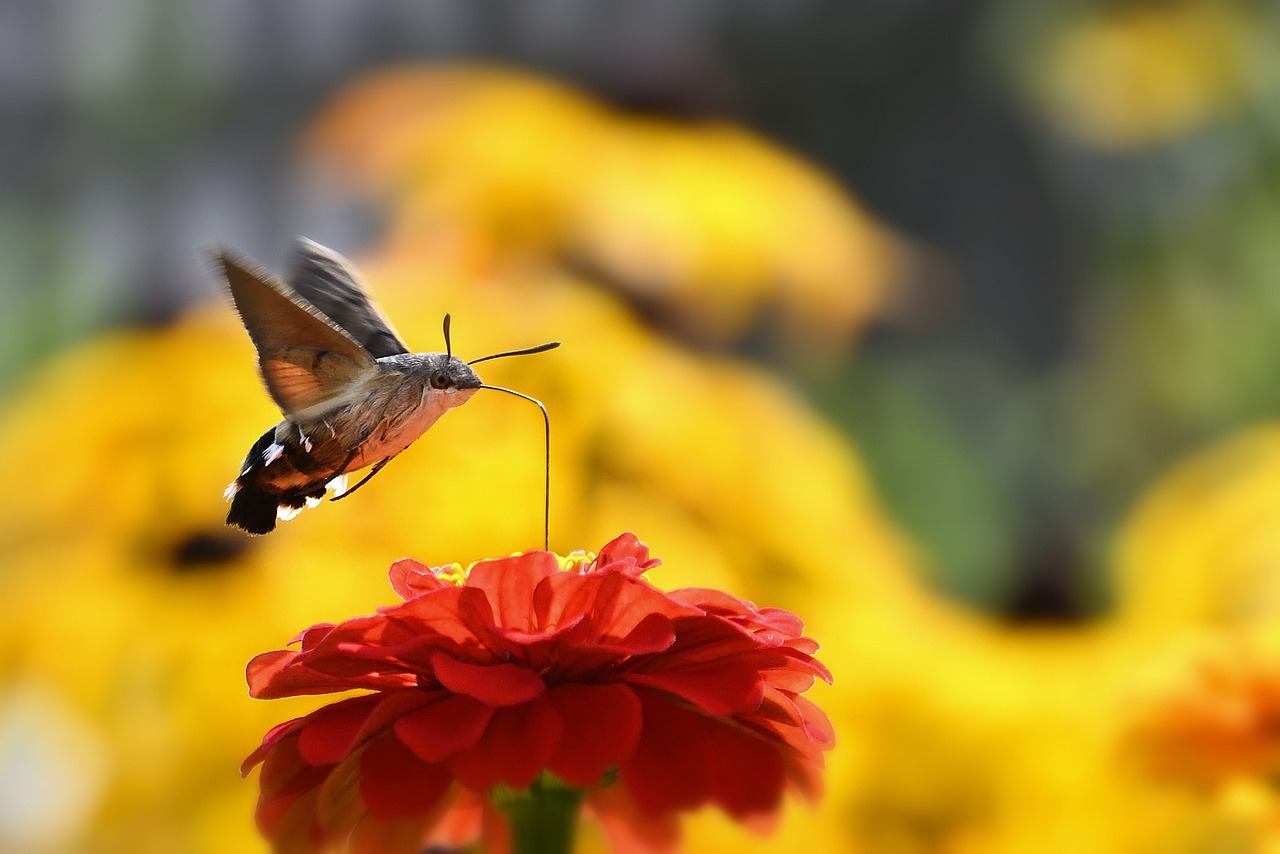
4. Red Hot Poker
The Red Hot Poker, scientifically known as Kniphofia, is a spectacular addition to any garden, especially for those looking to attract hummingbirds. With its tall spikes of tubular flowers that resemble fiery torches, this plant is not just a feast for the eyes but also a nectar-rich haven for these delightful birds. Imagine walking through your garden, greeted by the sight of vibrant red, orange, and yellow blooms swaying gently in the breeze, while hummingbirds flit from flower to flower, their iridescent feathers glistening in the sunlight. It's a scene that can transform any ordinary space into a vibrant wildlife sanctuary.
Red Hot Poker plants thrive in well-drained soil and prefer full sun, making them perfect for sunny garden spots. They are also quite hardy and drought-resistant, which means they require less maintenance than some other plants. It's like having a garden that takes care of itself while providing a colorful display and attracting wildlife. The flowers bloom from early summer to fall, ensuring a long-lasting source of nectar that keeps hummingbirds coming back for more.
One of the best aspects of the Red Hot Poker is its versatility. These plants can grow in various garden settings, whether in borders, mixed beds, or even as standalone features. They can reach heights of up to three feet, making them a striking focal point in any landscape. When planted in groups, they create a stunning visual impact that can turn your garden into a hummingbird paradise.
To maximize the attraction of hummingbirds, consider pairing Red Hot Poker with other nectar-rich plants. Here are some excellent companions:
- Bee Balm - Its vibrant blooms complement the Red Hot Poker beautifully.
- Salvia - A great source of nectar that blooms at the same time.
- Fuchsia - Adds a touch of elegance and color contrast.
In conclusion, if you're looking to create a garden that not only dazzles the eyes but also invites the charm of hummingbirds, the Red Hot Poker is an essential choice. Its striking appearance, ease of care, and ability to attract these magnificent birds make it a must-have for any garden enthusiast. So, why wait? Add some Red Hot Poker to your garden today and watch as your outdoor space transforms into a lively, colorful retreat filled with the delightful presence of hummingbirds.
Q: How often should I water Red Hot Poker plants?
A: Red Hot Poker plants are drought-resistant, so they typically need watering only during dry spells. However, regular watering is beneficial during their initial growth phase.
Q: Can Red Hot Poker survive in shaded areas?
A: These plants thrive best in full sun. While they may tolerate partial shade, their flowering may be less vigorous.
Q: How do I propagate Red Hot Poker?
A: Propagation is usually done through division in spring or fall. Simply dig up the plant, separate the root clumps, and replant them in your desired location.
Q: Are Red Hot Poker plants attractive to other wildlife?
A: Yes, besides hummingbirds, Red Hot Poker also attracts butterflies and bees, making it a great choice for a pollinator-friendly garden.
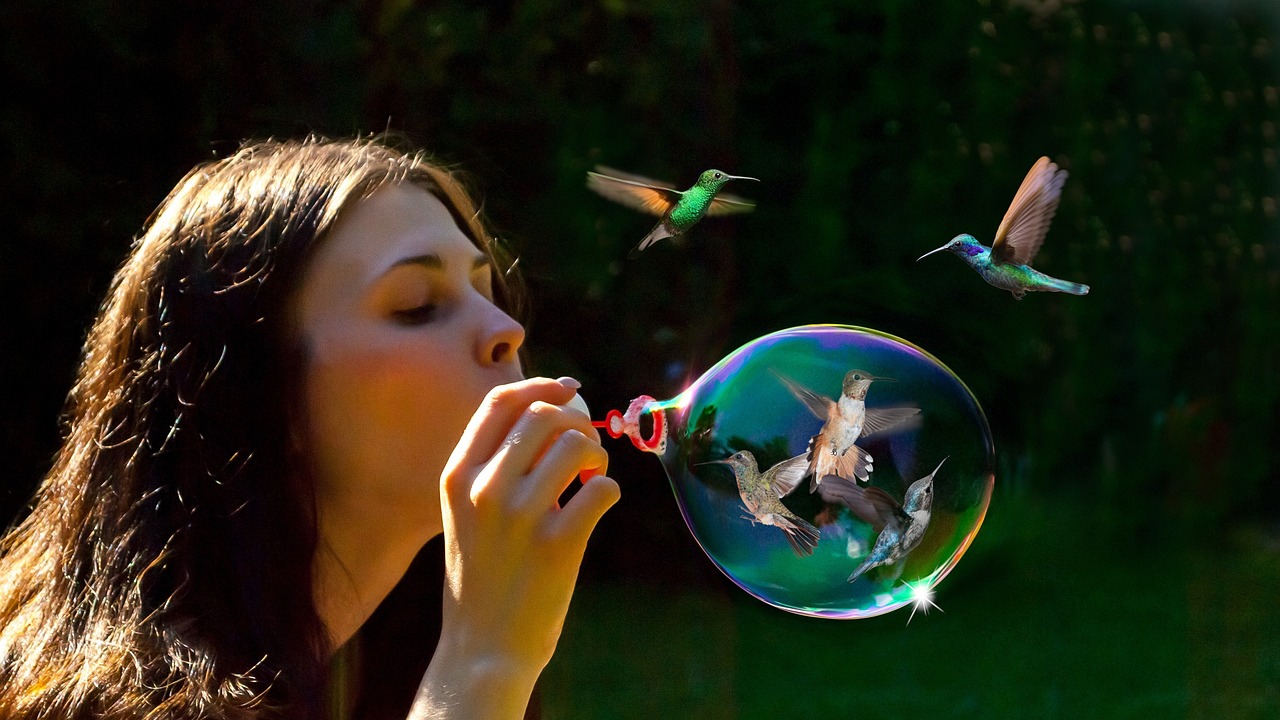
5. Fuchsia
Fuchsia plants are a true wonder of nature, boasting drooping, colorful flowers that seem to dance in the breeze. These enchanting blooms are not just a feast for the eyes; they are also a magnet for hummingbirds. Imagine walking through your garden and witnessing these vibrant creatures flitting from flower to flower, their iridescent feathers catching the sunlight. It's like a living painting, and Fuchsia plays a starring role in this masterpiece!
These plants thrive in shade to partial shade, making them perfect for those tricky spots in your garden where sunlight is limited. Their unique structure, with tubular flowers hanging delicately, allows hummingbirds to easily access the nectar inside. The combination of bright pinks, purples, and whites creates a stunning contrast against the green foliage, ensuring that your garden remains a vibrant sanctuary.
Fuchsia comes in various species and cultivars, which means you can choose the ones that best suit your garden's aesthetic. Some popular varieties include:
- Fuchsia magellanica: Known for its hardiness and ability to tolerate cooler temperatures.
- Fuchsia triphylla: Features long, tubular flowers that are especially appealing to hummingbirds.
- Fuchsia 'Gartenmeister Bonstedt': A favorite for its vibrant red and orange blooms.
In addition to their beauty, Fuchsia plants are relatively easy to care for. They prefer well-drained soil and regular watering, especially during dry spells. With the right conditions, these plants can bloom from spring until the first frost, providing a continuous source of nectar for your feathered friends. So, if you're looking to create a hummingbird haven in your garden, consider adding some Fuchsia plants to the mix!
Here are some common questions about Fuchsia plants and their role in attracting hummingbirds:
- Do Fuchsia plants need full sun? No, Fuchsia prefers partial shade and can thrive in areas with indirect sunlight.
- How often should I water my Fuchsia plants? Water them regularly, especially during dry periods, but ensure the soil is well-drained to prevent root rot.
- Can I grow Fuchsia in pots? Absolutely! Fuchsia plants do well in containers, making them a great option for patios and balconies.
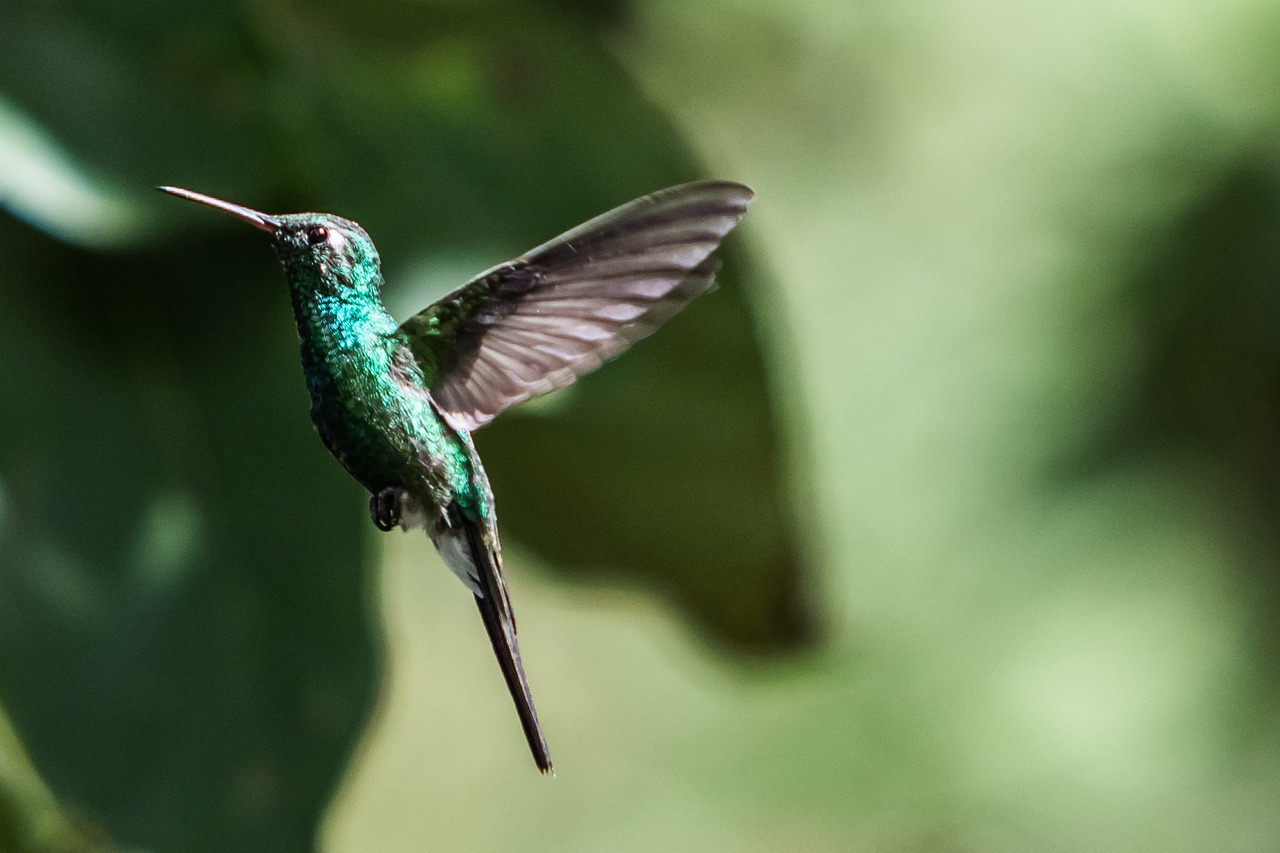
6. Coral Honeysuckle
Coral Honeysuckle, or Lonicera sempervirens, is a native vine that brings a touch of wild beauty to any garden. Its sweet-smelling, tubular flowers are not only a feast for the eyes but also a magnet for hummingbirds. Imagine walking through your garden and being greeted by the sight of these vibrant blooms, each one a little invitation for those delightful feathered friends to come and sip on their favorite nectar. The natural growth habit of Coral Honeysuckle allows it to climb trellises, fences, and even trees, creating a lush, green backdrop that enhances your outdoor space.
This plant is particularly beneficial for gardeners looking to create a wildlife-friendly environment. Not only does it attract hummingbirds, but it also provides sustenance for other pollinators like bees and butterflies. The flowers bloom in shades of red, orange, and yellow, creating a stunning visual display that can brighten up any dull corner of your garden. In terms of care, Coral Honeysuckle is relatively low-maintenance, thriving in a variety of soil types as long as it has access to sunlight. It’s a perfect choice for gardeners who want to add color without the stress of high upkeep.
When planting Coral Honeysuckle, consider its climbing nature. It can grow up to 20 feet in length, so giving it a sturdy support structure is essential. Whether you choose to train it up a fence or let it drape over a pergola, the results are sure to be breathtaking. Plus, its ability to attract hummingbirds makes it a fantastic conversation starter during summer gatherings. Just picture your friends marveling at the sight of these tiny birds flitting from flower to flower, all thanks to your choice of plants!
To maximize the attraction of hummingbirds, it's best to plant Coral Honeysuckle in clusters. This not only creates a more striking visual impact but also ensures that the birds have a reliable source of nectar. Pairing it with other hummingbird-friendly plants can create a vibrant oasis. Here’s a quick table to illustrate some companion plants that work well with Coral Honeysuckle:
| Companion Plant | Benefits |
|---|---|
| Bee Balm | Attracts various pollinators and adds a burst of color. |
| Salvia | Long-lasting blooms provide nectar throughout the season. |
| Fuchsia | Offers shade and vibrant colors, perfect for dark corners. |
In conclusion, Coral Honeysuckle is more than just a pretty face in the garden; it’s a vital part of a thriving ecosystem. By choosing this plant, you’re not only enhancing the beauty of your landscape but also supporting local wildlife. So why not take the plunge and plant some Coral Honeysuckle? Your garden—and the hummingbirds—will thank you!
Q: How do I care for Coral Honeysuckle?
A: Coral Honeysuckle thrives in well-drained soil and prefers full sun to partial shade. Regular watering is essential, especially during dry spells.
Q: Will Coral Honeysuckle attract other wildlife?
A: Yes! Besides hummingbirds, Coral Honeysuckle also attracts bees, butterflies, and other beneficial insects, making it a great addition to a pollinator garden.
Q: Is Coral Honeysuckle invasive?
A: While it can spread vigorously, Coral Honeysuckle is generally considered non-invasive. However, it’s always good practice to monitor its growth to ensure it doesn’t take over your garden.
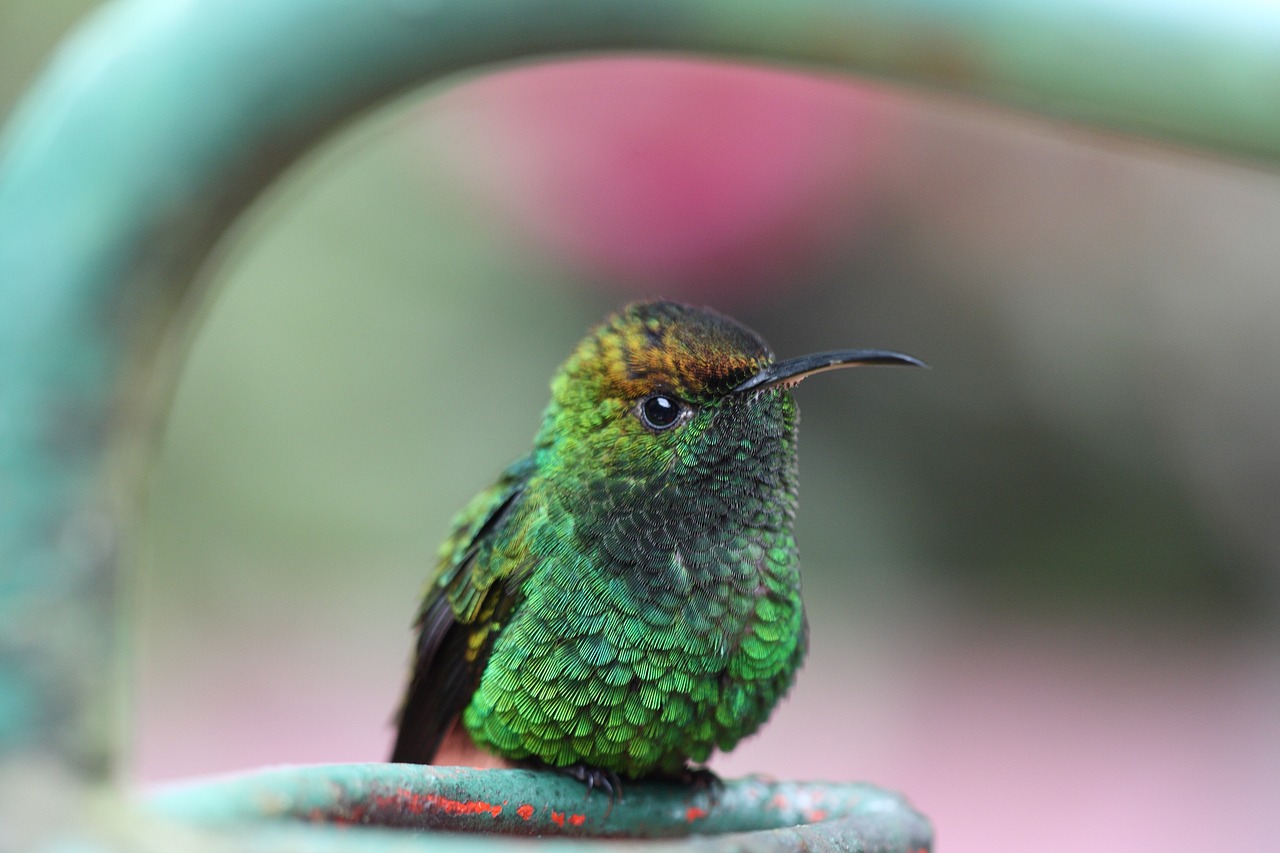
7. Zinnia
Zinnias are not just your average garden flowers; they are vibrant, colorful annuals that can instantly transform any dull space into a lively paradise. With their wide array of hues—ranging from fiery reds to sunny yellows and soft pinks—these flowers are like little bursts of joy in your garden. What’s more, they are particularly attractive to hummingbirds, who are drawn to their bright, flat blooms that provide a plentiful nectar source.
One of the best things about zinnias is their ease of growth. Whether you're a seasoned gardener or a novice with a budding interest in horticulture, zinnias are incredibly forgiving. They thrive in full sun and can tolerate a variety of soil types, making them a perfect choice for almost any garden setting. Just imagine planting a few seeds or young plants and watching them flourish into a riot of colors that not only beautify your space but also invite those delightful hummingbirds to visit.
In addition to their beauty and hummingbird-attracting qualities, zinnias also come with the added bonus of being low-maintenance. They are drought-resistant once established, which means you can enjoy their vibrant blooms without the constant worry of watering. This makes them an excellent choice for busy gardeners or those living in areas with less rainfall. Plus, zinnias bloom continuously from late spring until the first frost, ensuring that your garden remains lively and colorful throughout the summer months.
To maximize their attractiveness to hummingbirds, consider planting zinnias in clusters. This not only creates a stunning visual impact but also makes it easier for the birds to spot the flowers from a distance. You can mix different varieties to create a colorful tapestry that will have hummingbirds flocking to your garden in no time. Here’s a quick look at some popular zinnia varieties you might want to consider:
| Variety | Color | Height |
|---|---|---|
| State Fair | Mixed | 2-3 feet |
| Benary's Giant | Various | 3-4 feet |
| Cut and Come Again | Mixed | 1-2 feet |
| Thumbelina | Mixed | 6-12 inches |
In summary, if you're looking to attract hummingbirds while adding a splash of color to your garden, zinnias are an excellent choice. Their vibrant blooms, ease of care, and ability to thrive in various conditions make them a must-have for any garden enthusiast. So, why not plant a few zinnias this season and watch as your garden comes alive with both color and the enchanting presence of hummingbirds?
1. How do I care for zinnias?
Zinnias thrive in full sun and prefer well-drained soil. Water them regularly, especially during dry spells, but avoid waterlogging. Deadheading spent blooms will encourage more flowers to grow.
2. When should I plant zinnias?
Zinnias can be planted after the last frost in spring. They grow quickly and can be started from seeds directly in the garden or indoors a few weeks before the last frost.
3. Can zinnias grow in pots?
Absolutely! Zinnias do well in containers. Just ensure the pot has good drainage and is placed in a sunny location.
4. Do zinnias attract other pollinators?
Yes, zinnias attract various pollinators, including butterflies and bees, making them a great addition to any pollinator-friendly garden.
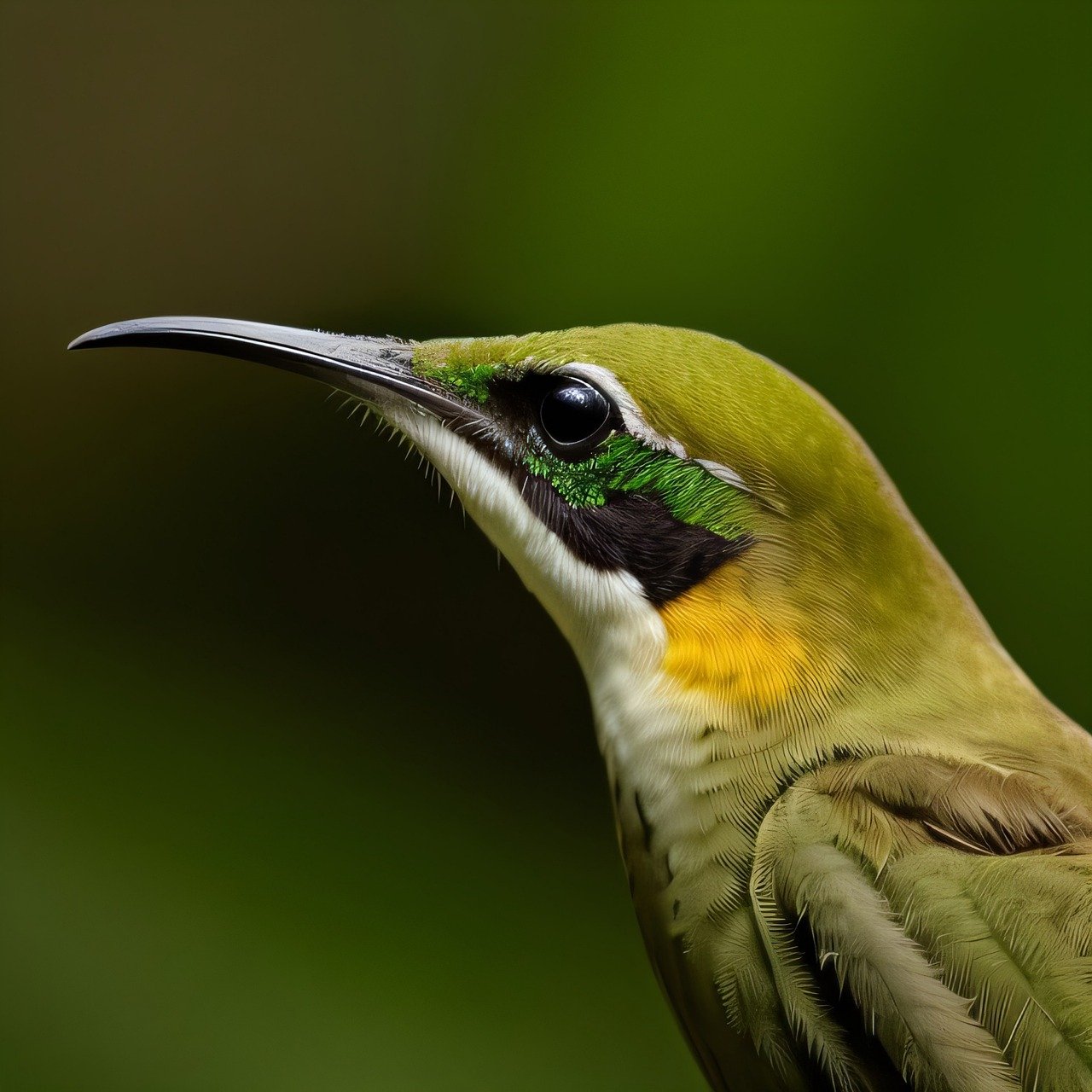
8. Lobelia
Lobelia is a stunning plant that brings a burst of color to any garden, especially when it comes to attracting hummingbirds. With its cascading flowers in shades of blue and purple, this plant not only serves as a visual delight but also acts as a magnet for these delightful creatures. Imagine stepping into your garden and being greeted by the sight of hummingbirds flitting from bloom to bloom, their iridescent feathers shimmering in the sunlight. Isn’t that a scene worth cultivating?
One of the best features of Lobelia is its versatility. Whether you choose to plant it in containers or garden beds, it adapts beautifully to its surroundings. Its trailing nature makes it an excellent choice for hanging baskets or as a border plant, creating a lush, vibrant edge that draws the eye and invites exploration. The delicate flowers not only attract hummingbirds but also other pollinators, enhancing the biodiversity of your garden.
When it comes to care, Lobelia is relatively low-maintenance, making it a favorite among gardeners. Here are some quick tips to keep your Lobelia thriving:
- Sunlight: Lobelia prefers partial shade to full sun, so choose a spot that gets dappled sunlight.
- Watering: Keep the soil consistently moist but not soggy. Regular watering will encourage more blooms.
- Fertilization: A light application of fertilizer during the growing season can promote lush growth and vibrant flowers.
In terms of attracting hummingbirds, Lobelia's tubular flowers are particularly appealing. The shape allows hummingbirds to easily access the nectar, making it a favored stop on their feeding routes. Planting Lobelia alongside other hummingbird-friendly plants, such as Bee Balm and Salvia, can create a rich environment filled with color and life, ensuring that your garden remains a buzzing hub of activity.
In summary, Lobelia is not just a pretty face in the garden; it plays a crucial role in supporting local wildlife, particularly hummingbirds. By incorporating this beautiful plant into your landscape, you’re not only enhancing its aesthetic appeal but also contributing to the health and vibrancy of your local ecosystem. So, why not give Lobelia a try? You might just find that your garden becomes the go-to spot for these enchanting birds!
Here are some common questions about Lobelia and its role in attracting hummingbirds:
- How often should I water Lobelia? - It's best to keep the soil consistently moist, watering regularly, especially during dry spells.
- Can Lobelia survive winter? - In milder climates, Lobelia can be perennial, but in colder areas, it's often grown as an annual.
- What other plants should I pair with Lobelia? - Consider planting alongside Bee Balm, Salvia, and Fuchsia for a vibrant hummingbird garden.
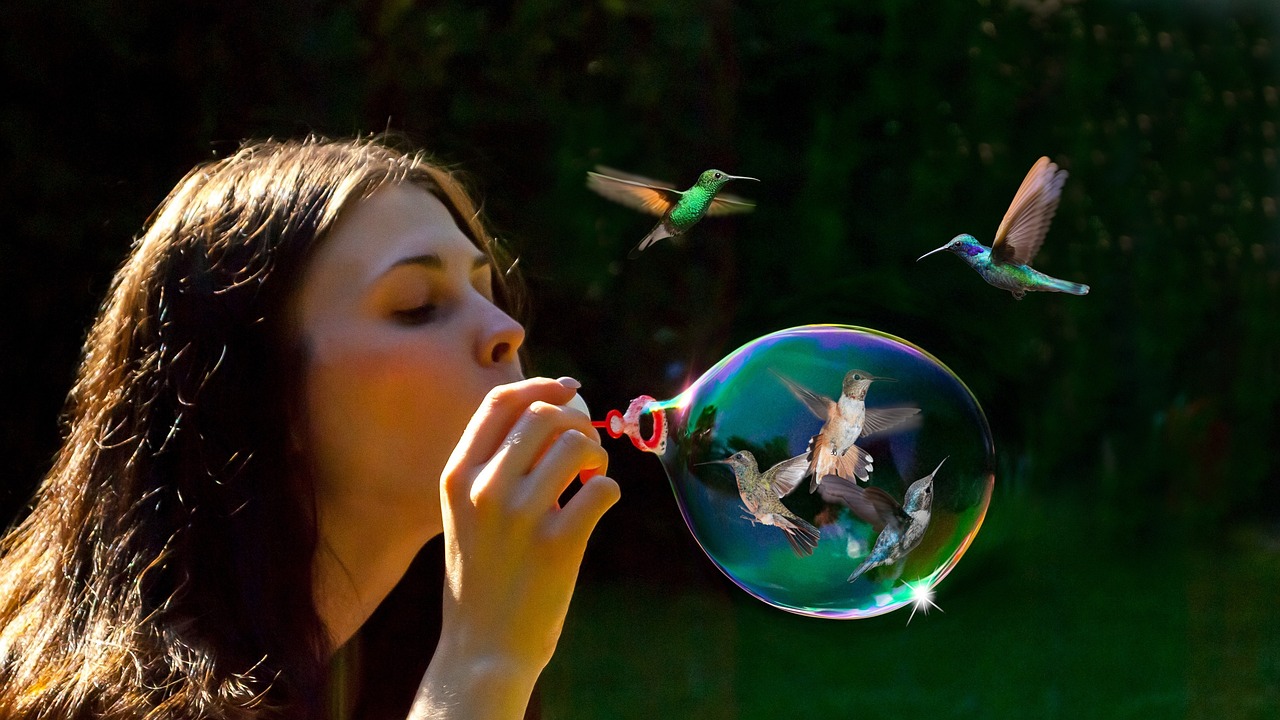
9. Penstemon
Discover the best plants to attract hummingbirds to your garden. These vibrant blooms not only enhance your landscape but also provide essential nectar for these beautiful creatures.
Bee Balm is a perennial favorite among hummingbirds due to its tubular flowers rich in nectar. This plant thrives in sunny locations and attracts various pollinators, making it a garden staple.
Salvia offers a wide range of colors and varieties that hummingbirds adore. Its long-lasting blooms provide a steady source of nectar throughout the growing season, ensuring your garden remains a hummingbird hotspot.
Trumpet Vine features striking trumpet-shaped flowers that are irresistible to hummingbirds. This vigorous climber can cover trellises and fences, creating a stunning visual while attracting these delightful birds.
Red Hot Poker plants produce tall spikes of tubular flowers that are perfect for hummingbird feeding. Their unique structure and vibrant colors make them a standout addition to any garden.
Fuchsia plants are known for their drooping, colorful flowers that hummingbirds find particularly appealing. These shade-loving plants can add a splash of color to darker corners of your garden.
Coral Honeysuckle is a native vine that produces sweet-smelling, tubular flowers. Its natural growth habit and nectar-rich blooms make it a favorite among hummingbirds and other pollinators.
Zinnias are vibrant annuals that attract hummingbirds with their bright, flat blooms. They are easy to grow and provide a continuous source of nectar throughout the summer months.
Lobelia features cascading flowers in shades of blue and purple that hummingbirds love. This versatile plant can be used in containers or garden beds, adding beauty while drawing in these feathered friends.
Penstemon, often referred to as beardtongue, is a stunning addition to any garden, particularly for those looking to attract hummingbirds. With its tubular flowers that come in various shades of red, pink, purple, and white, this hardy perennial is not only visually appealing but also serves as a significant source of nectar. Hummingbirds are naturally drawn to these flowers, making them a perfect choice for your hummingbird-friendly garden.
These plants thrive in a range of soil types and conditions, making them incredibly versatile. They are well-suited for sunny spots but can also tolerate partial shade, allowing for flexibility in your garden design. The blooms typically appear from late spring through early fall, providing a long-lasting food source for hummingbirds during their active season.
When planting Penstemon, consider grouping them together for a more dramatic effect. Their upright growth habit and vibrant colors can create a stunning focal point. Additionally, they attract not only hummingbirds but also a variety of other pollinators, including bees and butterflies, enhancing your garden's biodiversity.
To ensure your Penstemon plants thrive:
- Choose a well-drained location to prevent root rot.
- Water them regularly, especially during dry spells, but avoid overwatering.
- Prune spent flowers to encourage further blooming.
With their stunning appearance and ability to attract hummingbirds, Penstemon plants are a must-have for any garden enthusiast looking to create a lively and colorful outdoor space.
Q1: How do I attract more hummingbirds to my garden?
A: To attract more hummingbirds, plant a variety of nectar-rich flowers, especially those with tubular shapes. Additionally, consider adding a hummingbird feeder filled with a sugar-water solution, and keep it clean to encourage frequent visits.
Q2: Are Penstemon plants easy to care for?
A: Yes, Penstemon plants are relatively low-maintenance. They thrive in well-drained soil and require minimal watering once established. Regular deadheading will promote further blooms.
Q3: When is the best time to plant Penstemon?
A: The best time to plant Penstemon is in the spring or fall, allowing them to establish roots before the heat of summer or the chill of winter.
Q4: Can I grow Penstemon in containers?
A: Absolutely! Penstemon can thrive in containers as long as they have adequate drainage and receive enough sunlight.
Frequently Asked Questions
- What types of plants attract hummingbirds the most?
Hummingbirds are particularly attracted to plants with tubular flowers that are rich in nectar. Some of the best options include Bee Balm, Salvia, and Trumpet Vine. These plants not only provide the nectar these birds crave but also add vibrant colors to your garden.
- How can I create a hummingbird-friendly garden?
To create a hummingbird-friendly garden, consider planting a variety of nectar-rich flowers like Fuchsia, Zinnia, and Coral Honeysuckle. Additionally, avoid using pesticides, as they can harm these delicate creatures. Providing a water source, such as a shallow dish or fountain, can also attract them.
- When is the best time to plant for hummingbirds?
The best time to plant for hummingbirds is in the spring, as this is when they return from migration. Planting early allows the flowers to bloom just in time for their arrival, ensuring a plentiful food source. Aim to have a continuous bloom from spring through fall for the best results!
- Do hummingbirds prefer certain colors of flowers?
Yes! Hummingbirds are particularly attracted to bright colors, especially red, orange, and pink. These colors stand out in the garden and signal the presence of nectar-rich blooms. Incorporating these colors into your garden design can significantly increase your chances of attracting these beautiful birds.
- Can I use feeders in addition to planting flowers?
Absolutely! Using feeders filled with a sugar-water solution is a great way to attract hummingbirds. However, it's best to combine feeders with flowering plants. This way, hummingbirds have a natural food source while also enjoying the convenience of your feeders.
- How often should I change the nectar in my feeders?
It's recommended to change the nectar in your feeders every 3 to 5 days, especially in hot weather. This helps prevent mold and fermentation, which can be harmful to hummingbirds. Keep your feeders clean and filled to keep those little visitors coming back!
- Are there any plants I should avoid?
Yes, it’s best to avoid plants that are treated with pesticides or herbicides, as these chemicals can be harmful to hummingbirds. Additionally, steer clear of non-native plants that don’t provide the nectar these birds need. Stick with native plants that thrive in your area!



















